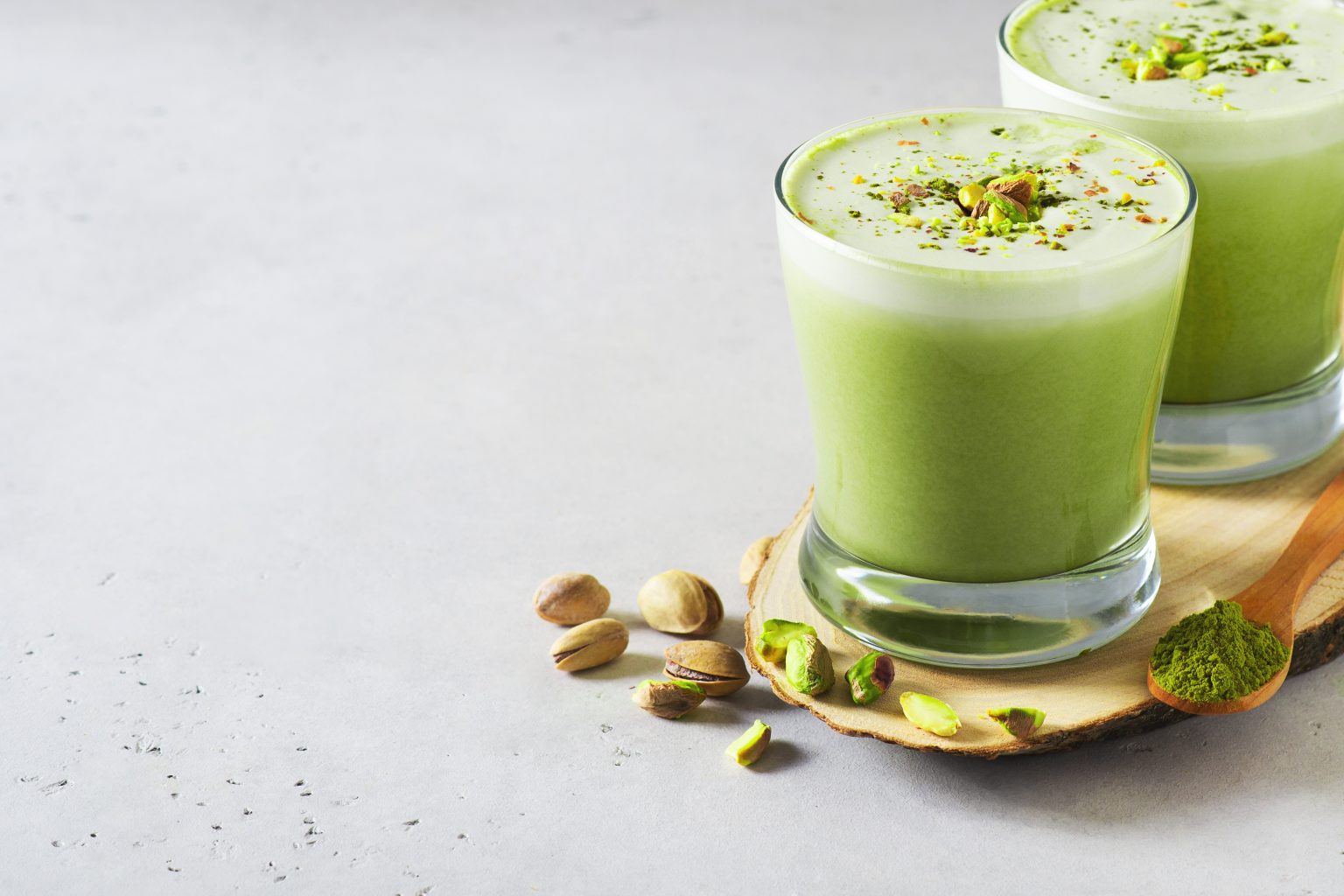Pistachio milk is the latest sensation sweeping through social media, gaining popularity as the must-try green beverage. Its subtle pale green appearance brings a distinct nutty flavour that sets it apart from other plant-based milks. Whereas almond milk is often chosen for its relatively mild taste, pistachio milk boasts a robust pistachio essence that wins over many palates.
The rise of pistachio milk signals a shift in consumer preferences, with many people looking beyond the staple oat milk for their morning drinks. Its unique taste profile makes it a favourite addition to lattés and other beverages, marking the start of a potential new trend this fall.
Procuring Pistachio Milk in the UK
If you are seeking pistachio milk, a plant-based alternative to traditional cow’s milk, it is not as readily available in UK supermarkets due to its higher price point. Pistachio trees thrive in specific climates and have a lengthy maturation period, contributing to the costliness of this dairy-free milk option.
In the realm of pistachio milk, Táche emerges as the first solely pistachio milk product in the United States, and it’s not artificially blended with other nuts. This feature may influence UK market trends. Depending on your preference, this milk comes in unsweetened and sweetened varieties, albeit at a premium of around $8 per carton.
For those seeking a pure experience, the ideal pistachio milk would consist of only nuts, water, and perhaps a pinch of sea salt. Unfortunately, like other nut-based milk such as almond milk, cashew milk, and other dairy substitutes like oat milk, many pistachio milk products incorporate additives and fillers.
When shopping for this alternative milk, especially non-dairy or other plant-based milk, it’s essential to scrutinise the ingredients list for unnecessary extras. This scrutiny should extend to purchasing at local establishments, such as farmers’ markets, where queries about production and ingredients are both important and encouraged. Remember to look beyond pistachio milk, considering various nut milk, including almond and cashew, which offer similar dairy-free benefits.
Crafting Homemade Pistachio Milk
Prepare your ingredients:
- Pistachios: 1 cup
- Water: Approximately 700 ml (or three cups of filtered water for blending)
- Optional: Additives like sweeteners or flavourings
Follow these steps:
- Soaking: Submerge pistachios in water for at least six hours or overnight to soften. This helps in easing the blending process.
- Rinsing: After soaking, thoroughly rinse and drain the pistachios.
- Blending: Place the nuts in a high-speed blender or food processor. Pour in the measured water and blend until the mixture appears uniform and smooth.
- Straining: Transfer the blend to a cheesecloth or a fine mesh nut milk bag over a bowl. Wring the cloth or press against the strainer to extract as much liquid as possible.
- Storing: Decant the liquid into a glass container and refrigerate. Consume the pistachio milk within three days for the best quality.
Equip yourself with the right equipment – a high-speed blender for a smooth blend, a nut milk bag, or a fine strainer for effective straining. To enrich the flavour profile, consider blending in a pinch of salt, a splash of vanilla extract, or a touch of cardamom, according to your preference.
Applications
Pistachio milk is a multi-faceted beverage suitable for both sweet and savoury uses. Its creaminess enhances the flavour of breakfast cereals and porridges. Its pale green hue and creamy texture contribute visually and tastefully when creating smoothies. This alternative to dairy milk pairs well with maple syrup or dates for sweetness, and a pinch of sea salt can accentuate its more affluent side. Incorporate a splash of vanilla extract as a sugar substitute for additional depth of flavour.
In cooking, it becomes a dairy-free agent in soups and baked goods, infusing a subtle, nutty essence. Its ability to foam renders it a choice companion for coffee and tea, bringing a delicate, vegan twist to frothy beverages. Here are some specific suggestions:
- Alternative sweeteners: agave, honey
- Add-ins for aromatic layers: cardamom, rose water
- Use the leftover pistachio pulp to add texture and flavour to foods.
- Enhances warm drinks with a smoother, creamy milk consistency
Nutritional Profile
Pistachio milk is a strong contender in non-dairy beverages, imbued with numerous beneficial properties. It boasts:
- Heart-healthy fats: Unlike many dairy options, pistachio milk is replete with unsaturated fats that support cardiovascular health.
- Antioxidants combat oxidative stress and fortify the body’s defences against environmental damage.
- Phytosterols: Present in pistachio milk, these plant compounds contribute to the maintenance of healthy cholesterol levels.
In a comparative lens, pistachio milk offers a nutrient balance that varies by brand and recipe. Typically:
- Protein: Comparable to oat and hazelnut milk but surpassing almond milk, though not quite reaching the protein content of soy or cow’s milk.
- Fibre: Contains an appreciable amount, yet less than found in oat milk.
- Carbohydrates and Calories: Higher than what is observed in almond milk but lower than in oat milk, presenting an intermediate option.
The absence of saturated fat in pistachio milk marks it as a favourable alternative to cow’s milk, which does contain this form of fat.
For micronutrients:
- Calcium and Potassium: While not as mineral-rich as almond milk, pistachio milk is noted for its higher B vitamin and thiamine content.
- Lower Blood Pressure: Studies suggest that piston milk may contribute to lower blood pressure levels, thanks to its potassium content, potentially making it an advantageous choice for those mindful of their cardiovascular health.
On balance, the choice amongst non-dairy milk may hinge on individual preferences for taste and nutritional priorities, as a comprehensive diet typically eclipses the need for a singularly perfect milk alternative. With its unique nutritional composition, Pistachio milk could be a delightful and healthful inclusion in one’s diet.



